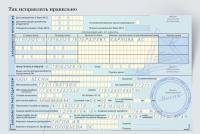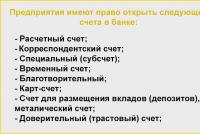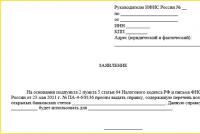3. Depreciation of fixed assets, depreciation indicators
The gradual loss of value of fixed assets is called depreciation of fixed assets. Distinguish physical and moral depreciation fixed assets.
Physical deterioration limited by service life. Distinguish physical depreciation of the 1st kind, due to the use of fixed assets, and the 2nd kind, due to the influence of the forces of nature.
The degree of physical depreciation of fixed assets can be determined using physical wear coefficient.
or 
Equity ratio of fixed assets.
 or
or 
Obsolescence fixed assets is due to the technical backwardness of fixed assets and the inefficiency of their use. Obsolescence of the 1st form due to the reduction in the cost of reproduction of machines and equipment with the same technical characteristics. The absolute value of obsolescence of the 1st form can be determined by revaluation of fixed assets.


Obsolescence of the 2nd form is caused by the appearance on the market of new, more highly productive machines and equipment.

R With – productivity of old machines and equipment,
R n – productivity of new machines and equipment,
F n - the cost of new technology.
Obsolescence coefficient of the 2nd form:

Depreciation of fixed assets can be complete or partial. Full depreciation requires the replacement of fixed assets. Partial wear is eliminated in the process of overhaul and modernization.
Sinking fund. Its formation and direction of use
For the reproduction of fixed assets (full or partial), funds are needed. These funds go to the depreciation fund in the form of depreciation deductions.
Depreciation deductions- this is the part of the cost of fixed assets transferred to the finished product during the entire life of the fixed assets.
As a result of the sinking fund created, the cost of the initially advanced capital is recovered. The circulation of fixed assets stops when an amortization fund is accumulated equal to the original cost of fixed assets. Depreciation subject:
expenses associated with the acquisition and commissioning of fixed assets;
expenses associated with the independent production of fixed assets;
expenses associated with the implementation of all repairs, upgrades, reconstruction and other improvements to fixed assets.
Sinking fund is calculated by the expression:
 ,
,
Where F P- the initial cost of fixed assets;
T A - amortization period;
S R– repair costs;
M– cost of modernization;
R– reconstruction costs;
S dem - dismantling costs;
F l- liquidation value of fixed assets.
Annual depreciation amount:

Life time fixed assets T and can be determined:
based on the technical parameters of fixed assets (durability, reliability, etc.)
or economic methods based on:
minimizing capital costs when comparing the option of repairing worn-out equipment with the option of purchasing a new one
minimizing the cost of production for the entire service life, etc.
On practice depreciation amount in the depreciation fund is determined by the depreciation rate. Depreciation rate- this is a certain percentage of the value of fixed assets, in accordance with which depreciation deductions are made.
In accordance with the Law "On taxation of corporate profits", the following procedure has been established for writing off fixed assets.
All fixed assets are divided into 3 groups:
Buildings, structures, their structural components and transmission devices. For this group of fixed assets, the annual depreciation rate is 5%.
Vehicles, information systems, household electro-mechanical devices and tools, furniture, office equipment. The depreciation rate for this group of fixed assets is 25%.
The third group includes fixed assets that were not included in the first two groups. They have a depreciation rate of 15%.
The basis for calculating depreciation charges is the book value of fixed assets of a particular group at the beginning of the reporting period.
F start prev. - the value of fixed assets at the beginning of the previous period;
F vv.prev.trans. - the cost of fixed assets put into operation during the previous period;
F select prev. - the cost of fixed assets retired from operation during the previous period,
And in - depreciation charges accrued for the previous period;
I - inflation index (taken into account if  ).
).
In other words, the expression in brackets is the residual value of fixed assets at the beginning of the reporting period. Based on established standards, annual depreciation amount is defined by the expression:
 ,
,
where F o - residual value at the beginning of the reporting period;
H A – depreciation rate, %
When using heterogeneous groups of fixed assets

For newly commissioned fixed assets, depreciation is charged only at the beginning of the month following the month of their receipt.
For retired fixed assets, depreciation is terminated from the beginning of the month following the month of retirement. Depreciation is accrued only during the standard life of fixed assets.
In the event that fixed assets are stopped for reconstruction and technical re-equipment, then the depreciation period increases for this period. During the reconstruction period, depreciation is not charged.






